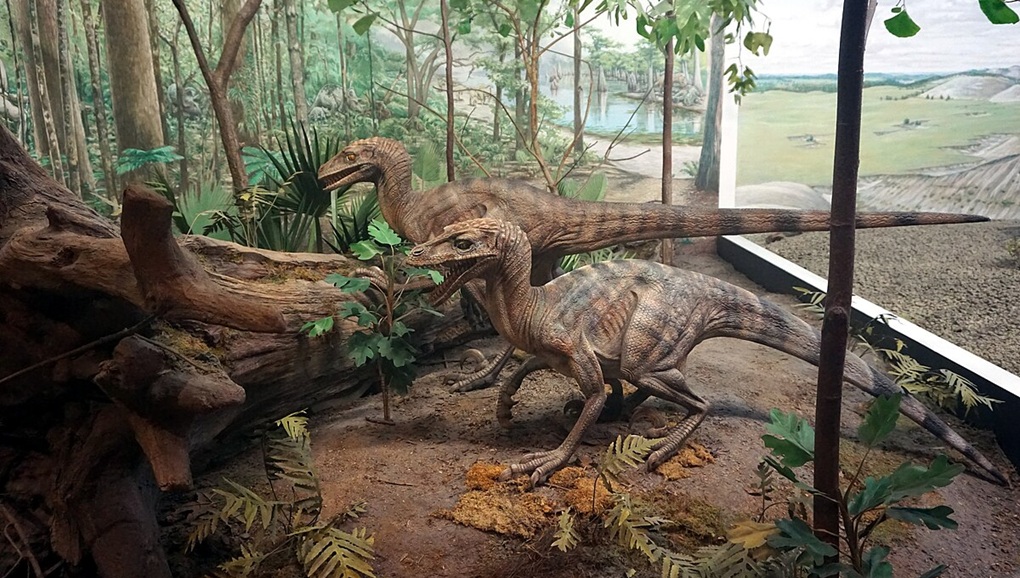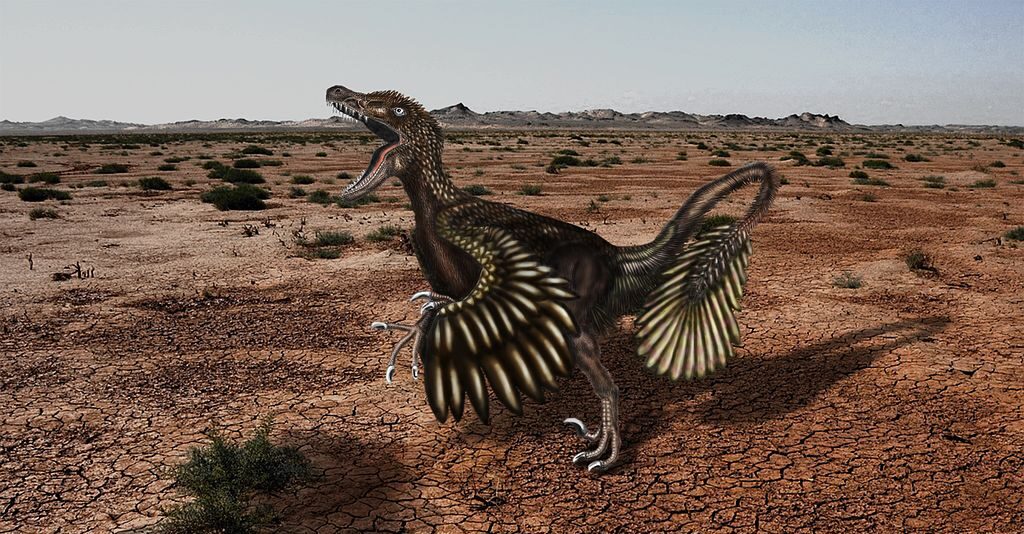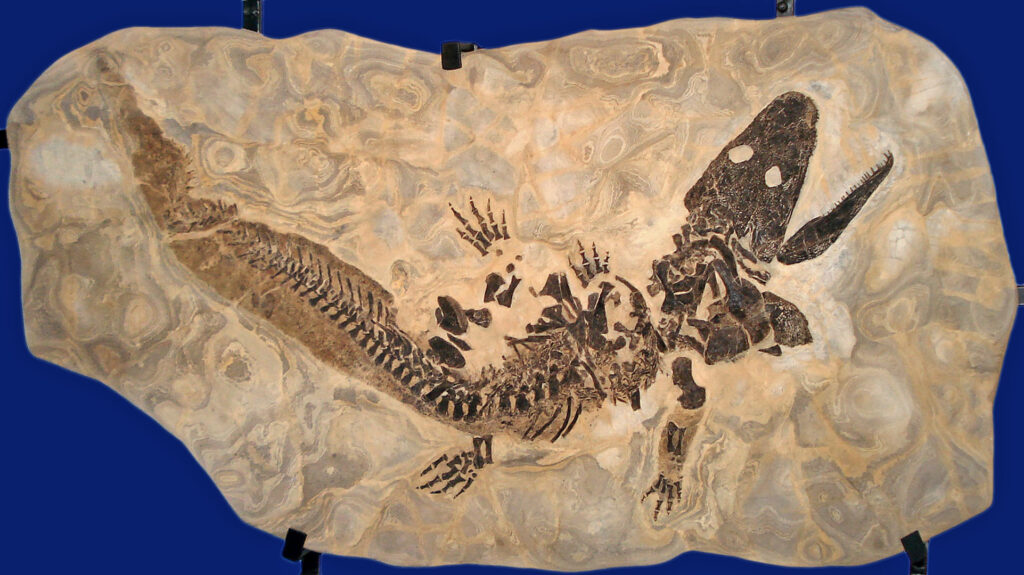The Hell Creek Formation stands as one of paleontology’s most significant treasures – a geological time capsule preserving the final chapter of the dinosaurs’ 165-million-year reign. Spanning portions of Montana, North Dakota, South Dakota, and Wyoming, this fossil-rich sedimentary layer captures a crucial moment in Earth’s history: the last few million years before the catastrophic asteroid impact that triggered the Cretaceous-Paleogene extinction event approximately 66 million years ago. Through meticulous excavation and analysis, scientists have reconstructed an extraordinarily detailed portrait of this ancient ecosystem, revealing a world both familiar and alien – where mighty Tyrannosaurus rex stalked through subtropical forests, bizarre horned dinosaurs browsed on flowering plants, and primitive mammals scurried underfoot, unwitting heirs to a kingdom about to fall.
The Geological Context of Hell Creek
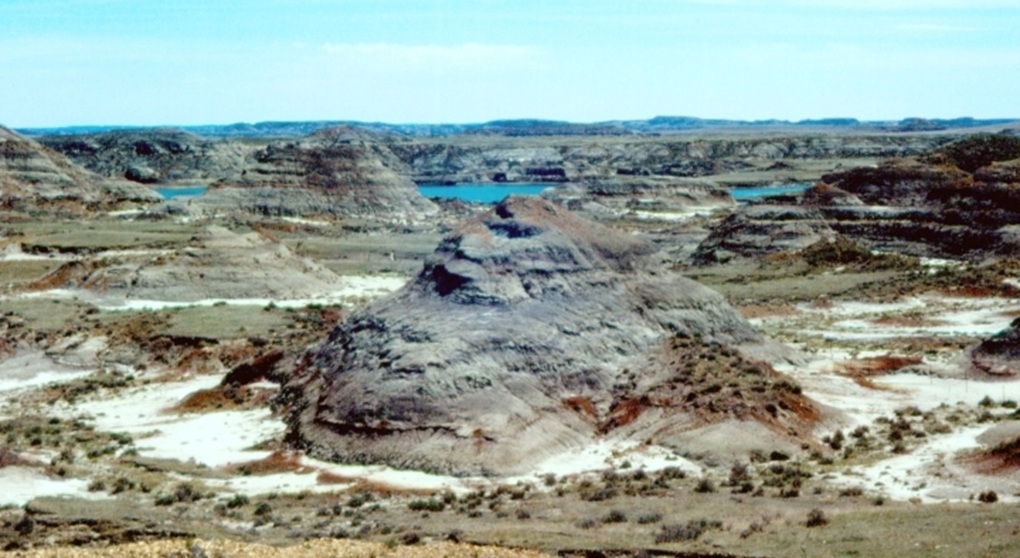
The Hell Creek Formation represents a series of river floodplain deposits that accumulated during the Maastrichtian age, the final stage of the Cretaceous period. These sedimentary layers consist primarily of sandstones, mudstones, and siltstones that were laid down between approximately 68 and 66 million years ago. The formation’s thickness varies from about 170 to 520 feet, with the variation reflecting differences in deposition rates and subsequent erosion across the region. Geologists recognize Hell Creek as particularly valuable because it preserves the K-Pg boundary – the thin layer of iridium-rich clay that marks the asteroid impact and the mass extinction that followed. This continuous deposition makes Hell Creek one of the few places on Earth where scientists can study fossils from both before and immediately after this pivotal moment in life’s history.
A Subtropical Landscape Unlike Today’s Great Plains

The environment preserved in the Hell Creek Formation bears little resemblance to the semi-arid Great Plains that now cover the region. During the late Cretaceous, this area enjoyed a subtropical climate with mean annual temperatures estimated between 61-79°F (16-26°C) and significantly higher rainfall than today. The landscape consisted of broad, meandering river systems flowing eastward toward the Western Interior Seaway, a shallow sea that divided North America. Extensive wetlands, swamps, and floodplains dominated the terrain, supporting lush forests of conifers, ginkgoes, cycads, and early flowering plants. Fossil pollen and plant remains indicate a diverse flora with over 300 plant species, including some of the earliest known oaks, walnuts, and magnolias. This rich environment supported one of the most diverse terrestrial ecosystems ever documented in the fossil record.
Tyrannosaurus rex: The Apex Predator
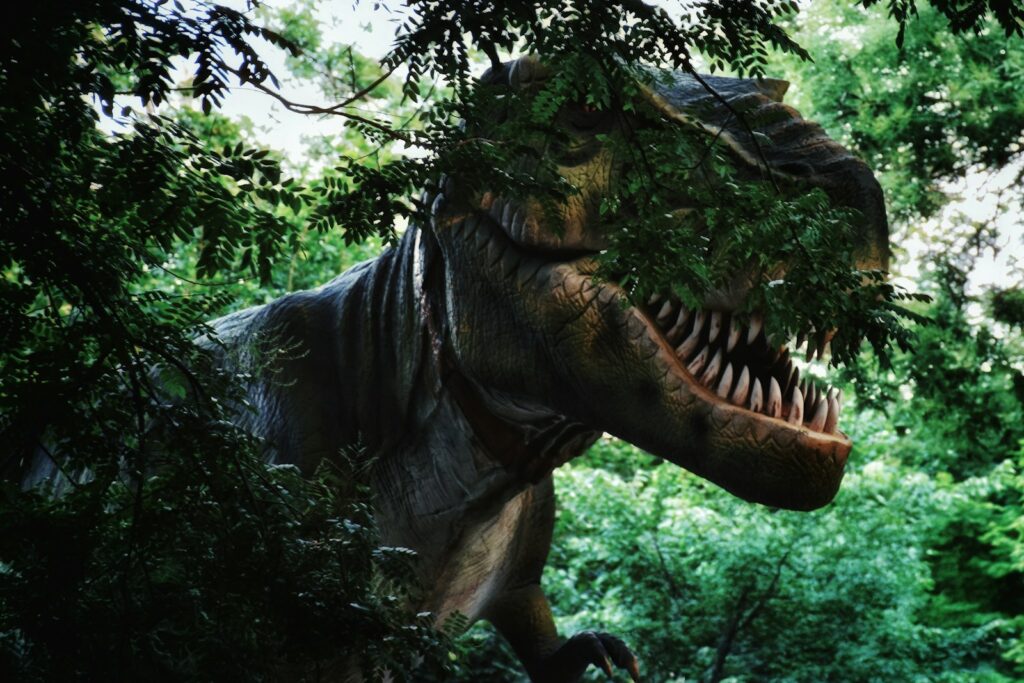
Tyrannosaurus rex unquestionably reigned as Hell Creek’s most formidable predator, reaching lengths of up to 40 feet and weights exceeding 9 tons. Recent research suggests T. rex possessed not just immense strength but sophisticated sensory capabilities, including exceptional vision, hearing, and an acute sense of smell that likely aided in hunting. Contrary to earlier depictions as simply a scavenger, evidence now strongly supports T. rex as an active predator with a bite force exceeding 12,000 pounds per square inch – powerful enough to crush bone. The Hell Creek Formation has yielded approximately 50 T. rex specimens, including “Sue” and “Stan,” among the most complete skeletons ever found. Population density estimates suggest that at any given time, the Hell Creek ecosystem may have supported only about 20 adult T. rex individuals across a territory of several thousand square miles, reflecting their position at the top of the food chain.
Triceratops: The Most Common Large Herbivore

Triceratops fossils dominate the large herbivore assemblage in the Hell Creek Formation, suggesting these three-horned dinosaurs were extraordinarily abundant in the ecosystem. Growing up to 30 feet long and weighing approximately 12 tons, Triceratops traveled in small family groups across the floodplains, using their powerful beaks and batteries of teeth to process tough vegetation. The distinctive frill and three facial horns likely served multiple functions, including species recognition, sexual display, and defense against predators like Tyrannosaurus. Remarkably, paleontologists have identified growth series from juvenile to adult specimens, revealing that young Triceratops had proportionally shorter horns and smaller, less ornate frills that developed as they matured. Some Hell Creek specimens show evidence of healed injuries, particularly on the facial bones, suggesting violent confrontations either between competing Triceratops or from attacks by predators.
The Diversity of Hell Creek’s Dinosaur Community
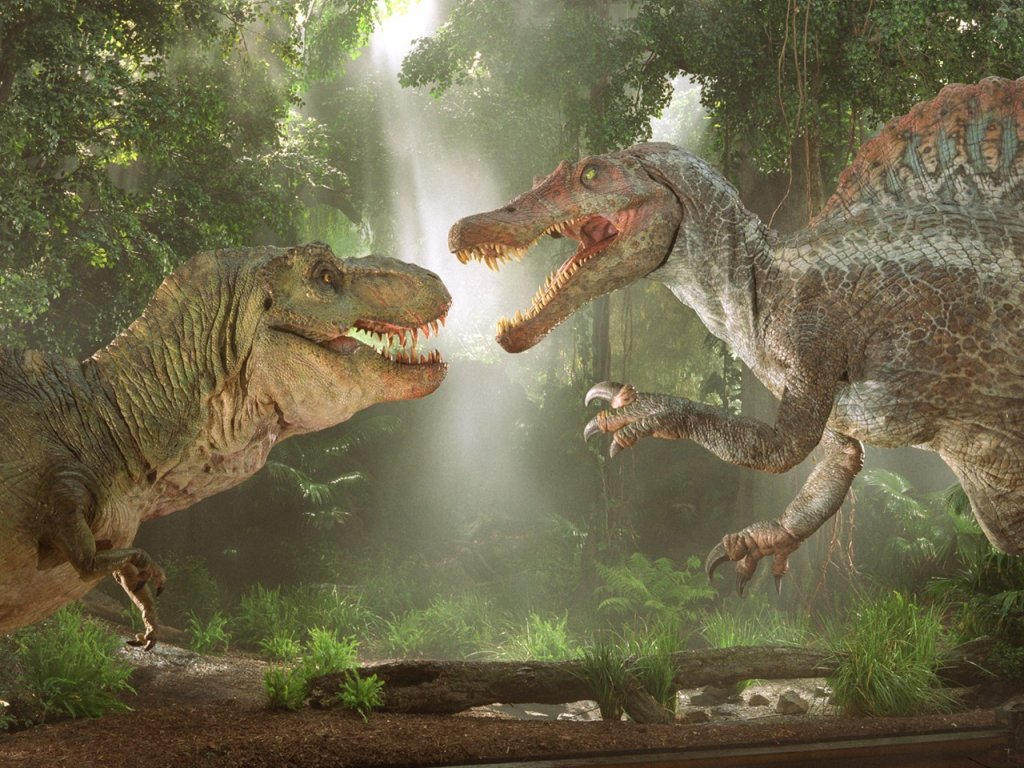
While T. rex and Triceratops receive the most attention, the Hell Creek Formation preserved a rich dinosaur community comprising at least 16 different species. Among the herbivores, the duck-billed hadrosaur Edmontosaurus was second only to Triceratops in abundance, with some individuals reaching lengths of 40 feet. The bizarre Pachycephalosaurus, with its distinctive dome-shaped skull, likely occupied specialized browsing niches in the forests. Several smaller predatory dinosaurs, including the swift Dakotaraptor and the smaller Acheroraptor, filled ecological roles below T. rex in the predator hierarchy. The armored Ankylosaurus, with its massive tail club, represented one of the most heavily defended dinosaurs in the ecosystem. The formation also preserved several species of small, bird-like dinosaurs, further emphasizing the evolutionary connection between dinosaurs and modern birds. Together, these diverse dinosaurs formed a complex community with specialized ecological niches similar to modern large animal communities.
The Rise of Flowering Plants

The Hell Creek Formation documents a critical transition in Earth’s flora, marking the ascendancy of angiosperms (flowering plants) that transformed terrestrial ecosystems. By the late Cretaceous, flowering plants had diversified into numerous families, many recognizable today, including early versions of magnolias, sassafras, palms, and members of the laurel family. This botanical revolution provided new food sources, with different dinosaur species evolving specialized feeding strategies to exploit these resources. Fossil pollen samples reveal that angiosperms comprised approximately 65% of the plant diversity in Hell Creek, with gymnosperms (including conifers and cycads) making up most of the remainder. Leaf fossils show evidence of insect feeding damage, indicating the early development of plant-insect relationships that would become foundational to modern ecosystems. The diversification of flowering plants also provided new habitats and food sources for small vertebrates, including early mammals.
Rivers and Wetlands: The Aquatic Ecosystem

The Hell Creek Formation preserved an extensive network of aquatic habitats that supported diverse communities of fish, amphibians, and reptiles. The meandering river systems contained at least 30 species of fish, including primitive sturgeons, gars, bowfins, and early relatives of modern catfish and salmon. Amphibians such as salamanders and frogs thrived in the wetland environments, while turtles showed remarkable diversity with at least seven different species. Perhaps most impressive were the crocodilians, represented by at least five species ranging from the massive Deinosuchus, which could reach lengths over 30 feet, to smaller, more specialized forms. These aquatic ecosystems served as important corridors for the movement of nutrients across the landscape. Isotopic studies of fossil teeth and bones indicate that some dinosaur species, particularly the duck-billed hadrosaurs, spent considerable time feeding near these waterways, demonstrating the integration between terrestrial and aquatic food webs.
Early Mammals: Living in the Shadows
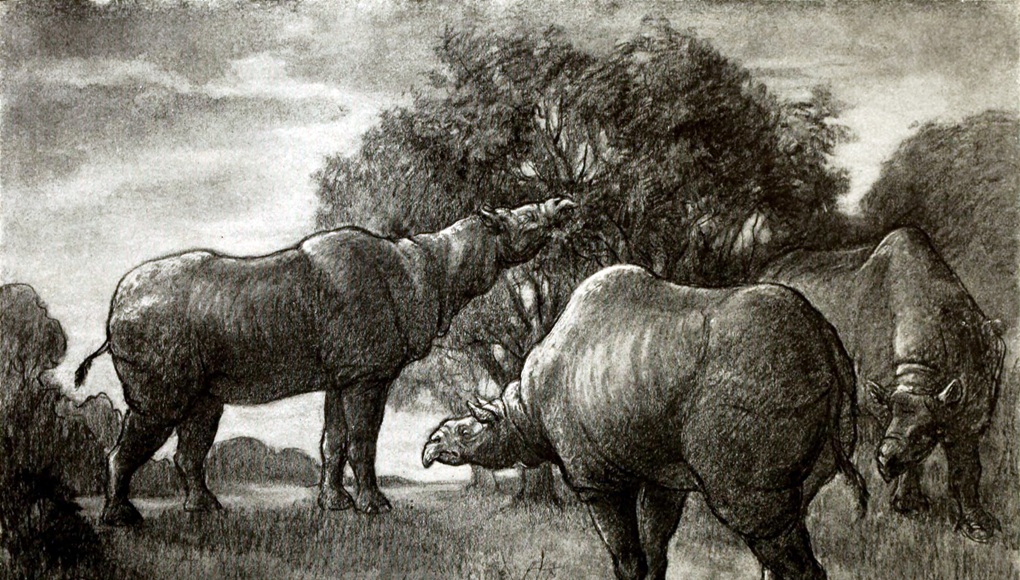
Though often overlooked amid the spectacular dinosaur fossils, the Hell Creek Formation preserved a surprising diversity of early mammals that survived by exploiting ecological niches unavailable to their giant reptilian contemporaries. Most Hell Creek mammals were small, with the largest reaching only about the size of a modern opossum. Approximately 20 mammal species have been identified from the formation, representing several major lineages including multituberculates (an extinct group of rodent-like mammals), early marsupials, and primitive placentals. These mammals generally exhibited adaptations for nocturnal activity, suggesting they avoided direct competition with dinosaurs by being active at night. Their teeth show specializations for various diets, including insectivory, omnivory, and herbivory, indicating sophisticated ecological partitioning among these small-bodied species. Recent discoveries suggest some Hell Creek mammals had begun developing more complex social behaviors, with evidence of multiple individuals preserved together suggesting possible family groups.
Evidence of Seasonal Stress and Ecological Pressure
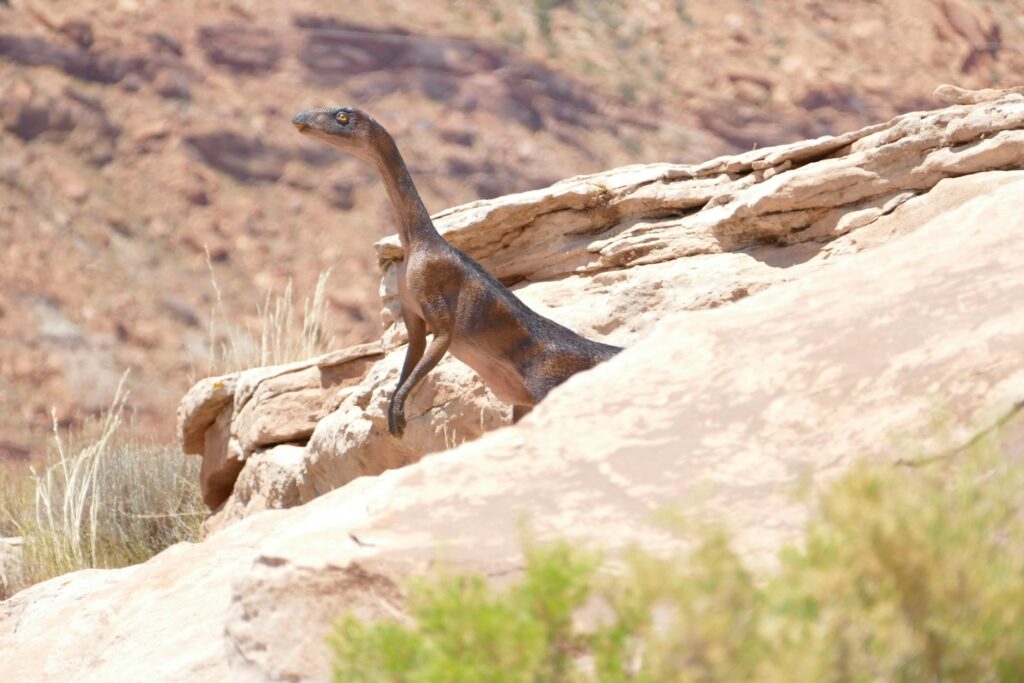
Despite the general abundance of the Hell Creek ecosystem, fossil evidence reveals that life wasn’t always easy for its inhabitants. Analysis of growth rings in fossil bones indicates many dinosaur species experienced seasonal stress, likely corresponding to annual dry periods. These growth markers suggest that even the mighty T. rex faced challenging conditions during certain parts of the year. Pathological specimens showing evidence of injuries, infections, and diseases occur frequently in the Hell Creek assemblage, with approximately 30% of Triceratops specimens showing some form of pathology. Particularly telling are stress markers in tooth development, called incremental growth lines, which indicate periods of nutritional deficiency. Competition for resources appears to have been intense, evidenced by the high degree of ecological specialization among contemporaneous species. These indicators suggest the ecosystem experienced natural fluctuations in resource availability long before the asteroid impact, though nothing approaching the catastrophic disruption that would follow.
Signs of Volcanic Disturbance

The Hell Creek Formation contains evidence of significant volcanic activity that affected the ecosystem in the million years leading up to the asteroid impact. Ash layers from the massive eruptions of the Deccan Traps in what is now India have been identified within Hell Creek sediments, confirming these distant volcanic events deposited material across global distances. Geochemical analysis of these ash layers indicates they contained elevated levels of mercury and other potentially toxic elements that may have stressed the ecosystem. Some paleontologists argue that this volcanic activity had already begun destabilizing dinosaur communities before the asteroid impact, pointing to what appears to be a gradual decline in dinosaur diversity in the uppermost layers of Hell Creek. Isotopic studies of fossil teeth suggest slight changes in plant communities corresponding to these volcanic episodes, potentially affecting herbivore populations. However, the evidence remains inconclusive, with other researchers maintaining that dinosaur ecosystems remained robust until the sudden asteroid impact.
The K-Pg Boundary: Moment of Extinction

The most dramatic feature of the Hell Creek Formation is the Cretaceous-Paleogene (K-Pg) boundary layer, marking the moment when a 6-mile-wide asteroid struck the Yucatán Peninsula in Mexico. This thin clay layer, typically less than an inch thick, contains abnormally high concentrations of iridium, an element rare on Earth’s surface but common in asteroids. The boundary also contains shocked quartz, tiny spherules of melted rock ejected from the impact site, and abundant soot from global wildfires. Fossil evidence disappears abruptly at this boundary – no dinosaur remains (except birds) have ever been found above this line. Temperature estimates derived from plant fossils suggest global cooling of approximately 7-12°C following the impact, with several years of near-freezing conditions even in tropical regions. The boundary layer represents not just the end of the dinosaurs, but a global mass extinction that eliminated approximately 75% of all species on Earth.
After the Impact: The Early Paleocene Recovery

The Hell Creek Formation’s stratigraphic sequence continues above the K-Pg boundary, capturing the earliest stages of recovery following the mass extinction. The first few meters of sediment above the boundary contain a distinctive “fern spike” – an abundance of fern spores indicating these hardy plants were the first to recolonize the devastated landscape. Mammal fossils from these post-extinction layers show a rapid increase in both size and diversity, as these survivors expanded into ecological niches previously occupied by dinosaurs. Particularly interesting is evidence that certain plant-insect relationships recovered remarkably quickly, with leaf damage patterns indicating specialized insect feeding resumed within a few hundred thousand years. Analysis of carbon isotopes in these early Paleocene sediments suggests primary productivity in the ecosystem remained suppressed for approximately 1.5 million years before reaching levels comparable to the late Cretaceous. The Hell Creek Formation thus provides a unique window into both the destruction of an ancient ecosystem and the assembly of the new world that followed.
Modern Excavation and Research Techniques
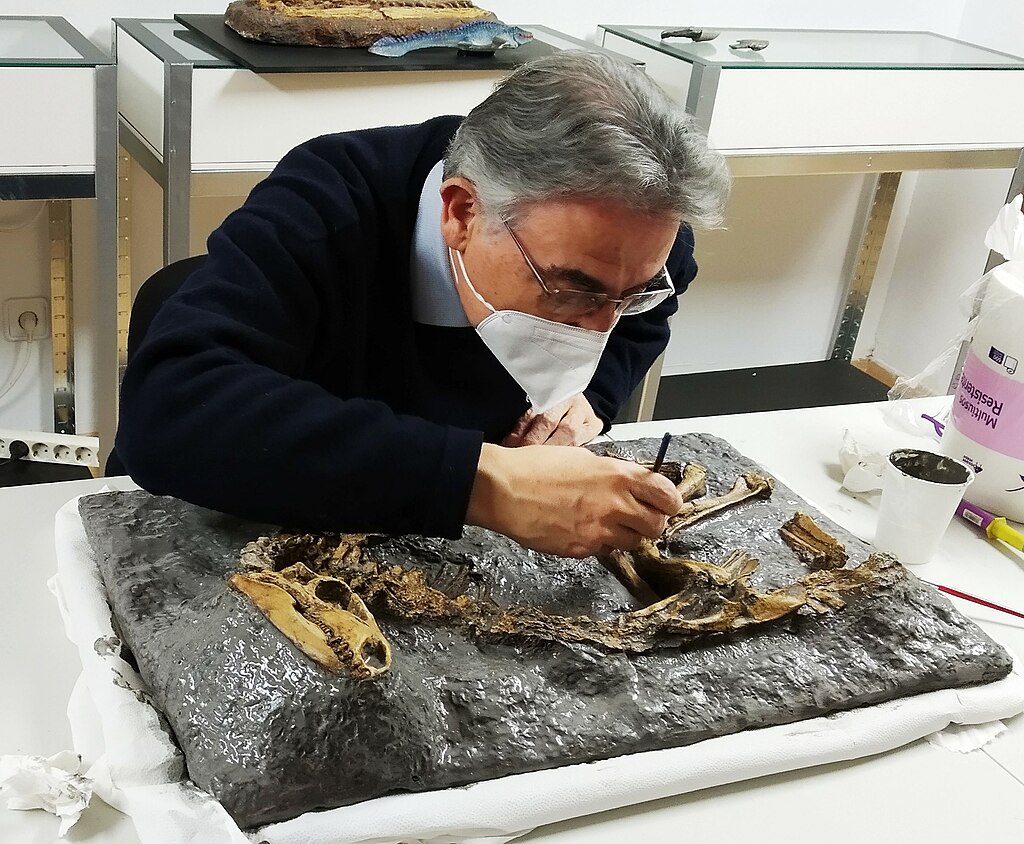
Research in the Hell Creek Formation continues to advance through innovative techniques that extract previously unattainable information from these ancient deposits. High-resolution CT scanning now allows paleontologists to examine the internal structures of fossils without damaging specimens, revealing details about brain case anatomy, sinus structures, and growth patterns. Isotopic analysis of fossil teeth provides insights into diet, migration patterns, and environmental conditions experienced during an animal’s lifetime. Ancient DNA extraction, while challenging in specimens of this age, has yielded fragmentary genetic information from exceptionally preserved specimens. Paleontologists now employ comprehensive excavation methods that document the precise position of every fossil within sedimentary layers, preserving contextual relationships that help reconstruct ancient ecosystems. These advanced approaches, combined with traditional field methods, continue to yield new discoveries – the Hell Creek Formation still produces approximately five new dinosaur specimens annually, ensuring this prehistoric world will continue revealing its secrets for generations to come.
Conclusion
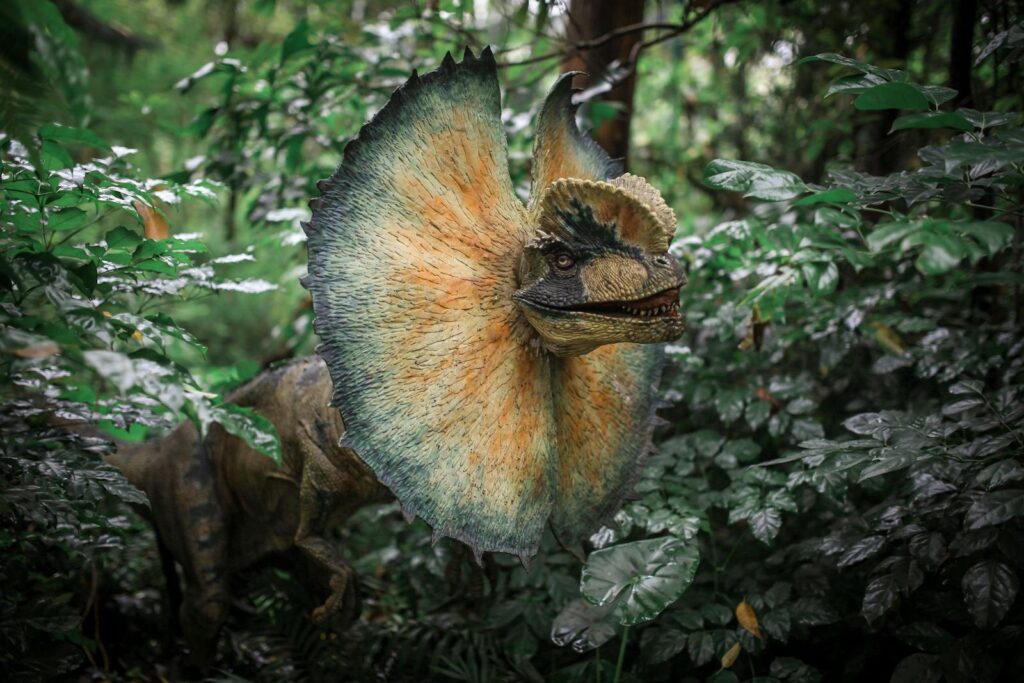
The Hell Creek Formation offers us a remarkable window into one of Earth’s most pivotal moments – the end of the Age of Dinosaurs and the beginning of the Age of Mammals. What makes this geological formation so extraordinary is not just its fossil richness, but the completeness of the ecological picture it provides. From tiny pollen grains to massive Tyrannosaurus skeletons, from riverbed sediments to volcanic ash layers, every element contributes to our understanding of this ancient world. The dinosaurs of Hell Creek, though separated from us by 66 million years, inhabited a recognizable Earth with seasonal challenges, predator-prey relationships, and complex ecological interdependencies. Their sudden extinction, preserved with geological precision in the K-Pg boundary, represents both an ending and a beginning – the closing of the Mesozoic chapter and the opening of evolutionary possibilities that would eventually lead to our own existence. As research techniques continue to advance, this geological time capsule will undoubtedly yield further insights into both the magnificent lost world of the dinosaurs and the profound planetary processes that shape life’s ongoing story.

